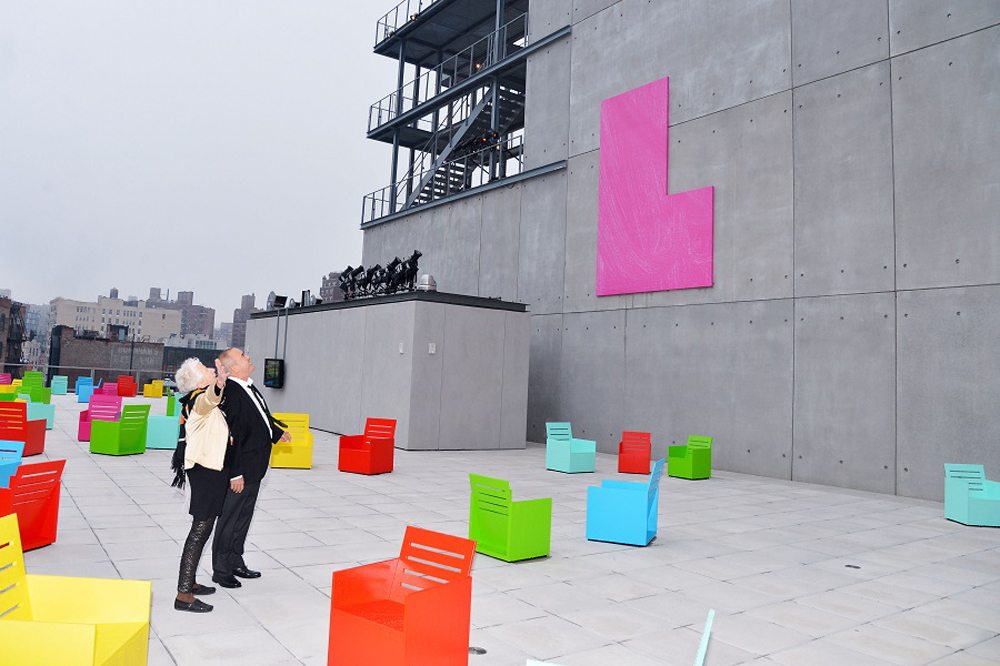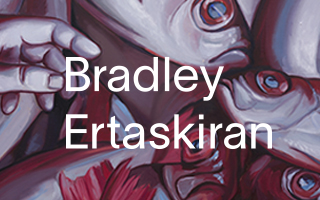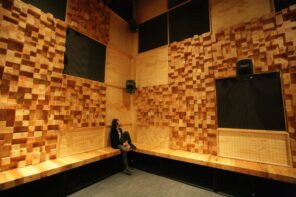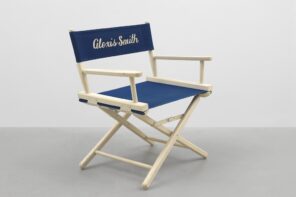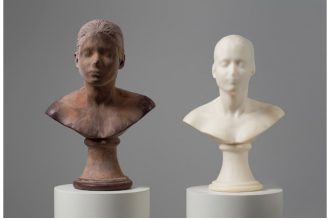Today, the new Whitney Museum of American Art opens its broad gates to the masses. If New York’s museum competition were a horserace, Renzo Piano’s appealing and thoughtful design would rocket it to the lead.
Yet art is not a horserace. And although it’s amusing to use such metaphors, it’s also dangerous to do so.
It’s worth celebrating the new museum as a triumph (not every New Museum pulls off a relocation so successfully), while also taking a sober look into the future it portends for the art scene as a whole.
What makes the new Whitney so pleasing? That’s partly to do with how the design synthesizes the latest wisdom on the purpose a museum serves within a city: not a storehouse of knowledge, or a church for true believers but, first of all, an enticing leisure destination.
The new building makes the most of its site, with sweeping views of the skyline and water, chill-out spaces, and outdoor terraces and staircases. These last knowingly play off the presence of the High Line, the nearby tourist superhighway which it overlooks, and which the museum is counting on to deliver the massive new audiences it needs to justify the pricey move.
The New York Times‘s Robin Pogrebin recently explained the pressure on the transplanted institution, which has increased its operating budget by almost half, from $33 million to $49 million. It plans to fill this gap via “an enhanced endowment, a jump in memberships and an increased number of visitors, driven in part by the museum’s location at the southern end of the heavily-trafficked High Line.”
Compared to its old uptown Marcel Breuer-designed building, the Whitney has doubled its available exhibition space, from 33,000 square feet to 63,000 square feet (that includes the new outdoor space). But it hopes initially to triple attendance, which averaged 350,000 before.
Cities grow, and art grows, and a city’s art museums will grow with them. But believe it or not, not all growth is good for art. In fact, by general consensus, US museums overbuilt in the recent past, creating showpiece buildings that could not justify their new costs. Indeed, one way to read the relatively un-flashy exterior of the Piano building is as a very clear signal that it is not just another rash trophy.
Anthropologist Matti Bunzl has written an insightful little book called In the House of Balloon Dog, based on his time embedded at the Museum of Contemporary Art, Chicago. In the preface, he explains how what seems like a sign of cultural strength – the museum building boom – actually grows out of the twisted economics of our day. I’ll quote a long passage, because I think it helps cut through some of the preciousness about contemporary museums and their mission:
Instead of causing decline, the neoliberal order forces museums into a relentless spiral of growth … With reductions in public funding, museums need to seek corporate support; to gain such support, they need to attract larger audiences; with more spectacular shows, exhibition costs are spiking; to cover these expenses, institutions need to be aggressive in seeking individual donations; to appeal to donors, museums have to become destinations that properly reflect on their benefactors and the art they lend or donate to the institution; to do this in style, old buildings have to expand, new ones erected; the bigger buildings have greater staffing needs and raise overhead costs; to cover these costs, museums have to pursue corporate support even more aggressively; to do so effectively, visitor numbers need to be increased even more, which requires more histrionic shows, with even greater appeal to individual donors, etc. etc. The cycle can commence at any point and its elements are readily interchangeable. No matter how it is drawn, however, what remains is the imperative for growth.
The Whitney is not the MCA. However, in at least one sense, Bunzl’s book is particularly relevant to the case at hand: As the title indicates, In the House of Balloon Dog is specifically about the pressures he saw first-hand behind the scenes during its 2008 Jeff Koons retrospective. The Whitney, of course, concluded its time in the uptown Breuer space with another Koons retrospective last year.
At the MCA, Bunzl describes how giddy the marketers were about this show, about the sheer number of Koons cross-promotion opportunities, from baby tees to cookies. By comparison, Bunzl describes the marketing team as “despondent” about the prospects of a subsequent Jenny Holzer show, with its less warm-and-fuzzy vibe: “Jenny Holzer is not a gateway show. It will offend some viewers.” The pressure of relentless competition for attention pushes towards a certain kind of play-to-the-balconies thinking about art.
Koons was a monster success for the Whitney, helping to drum up memberships and draw attention before the big leap to the Meatpacking District. Those who were not a fan of the Koons brand of shiny populism, however – and there were many of those – were left a little queasy by the whole thing.
In some ways, given the demanding realities ensured by the expensive new HQ, I think that the last show at the Breuer building is likely more of a prophecy of the future than the inaugural show here, “America Is Hard to See.” All in all, the latter does a masterful job of satisfying the art nerds (a few legitimate quibbles about the parochialism of the collection aside). But after the surge of new visitors drawn by the fresh building, the museum is going to need to find or invent Koons-esque showstoppers to keep ’em coming off the High Line at a vastly greater rate than they were on Madison Avenue.
With luck and relentlessly sensitive curators, I actually think that the Whitney might be able to pull off this high-wire act – for itself. But as Bunzl emphasizes, this is a dynamic that pits institutions against each other, which is why the horserace talk is a little foolhardy.
To continue reading article, click here for Artnet News.

